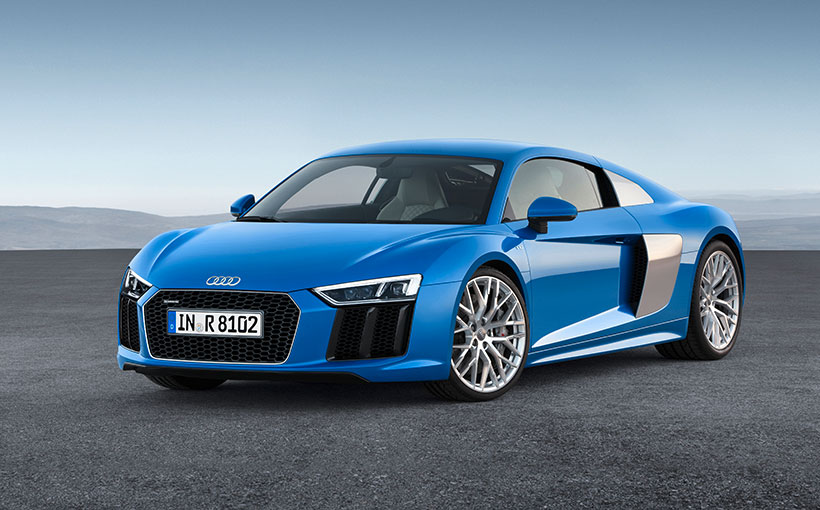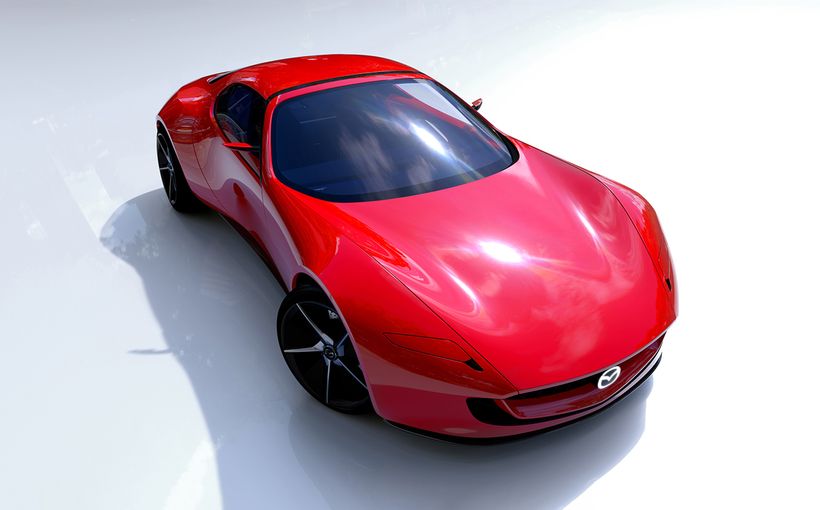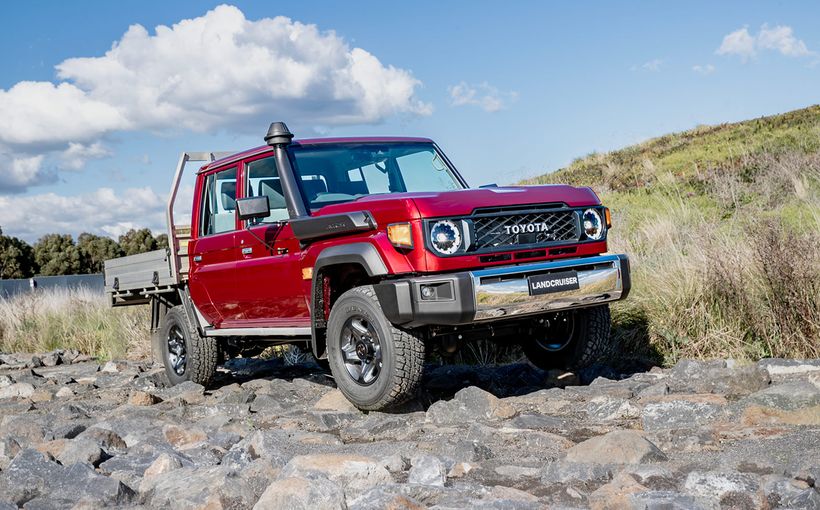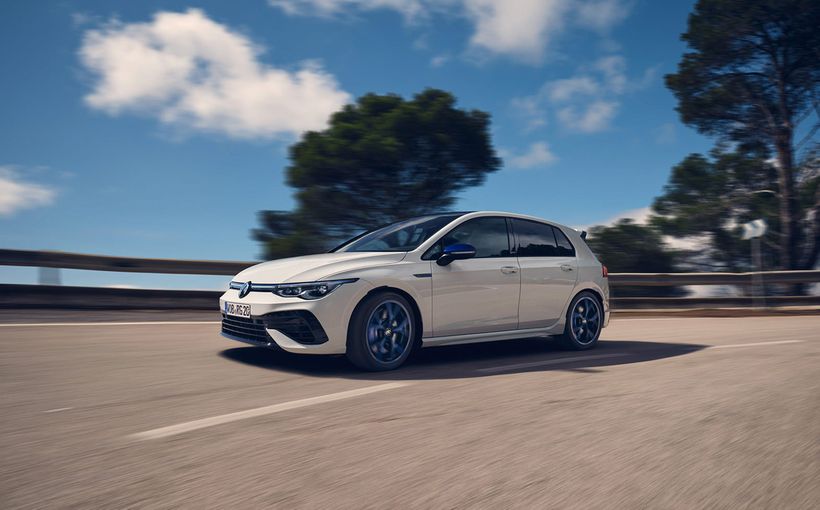IT IS 2007 all over again, as Audi seeks to satiate a soaring global appetite for supercars a second time around with the R8 Mk2.
Unveiled at the 2015 Geneva motor show in Switzerland in early March, the latest-gen high-tech mid-engined supercar from Ingolstadt has arrived in two V10 guises for traditionalists, as well as an unexpected e-tron plug-in hybrid.

That’s the good news. The bad news is that the reborn R8 is still up to 18 months away from an Australian debut. Even Europe won’t see the rip-snorting two-seater tearaway before the middle of this year.
It’s all-change for the most audacious Audi on offer, with the previous Lamborghini Gallardo-based underpinnings giving way to a revised version of the latter’s Huracan successor.
That means a heavily modified version of the Italian thoroughbred’s 5.2-litre V10, in two very tasty flavours. The ‘base’ version offers a not inconsiderable 397kW of power and 540Nm of torque at a stratospheric 6500rpm – a jump of 11kW and 10Nm respectively over the previous entry-level V10.

The result sees the new R8 blast to 100km/h from standstill in an outstanding 3.5 seconds, representing a drop of 0.1s compared to its predecessor, for a V-max of 323km/h. Folks, we’re talking about the base variant here…
At the other end of the R8 spectrum is the V10 Plus, which sees power rocket by 45kW to 449kW and torque leap 20Nm to 560Nm, slicing the aforementioned sprint time to a barely comprehendible 3.2s (a 0.3s improvement). Furthermore, the 0-200km/h dash is over in an outrageous 9.9s, while the top speed has been officially recorded at 330km/h.

Reflecting who’s actually boss in the big scheme of things at Audi-owned Lamborghini, the R8 V10 Plus also happens to be 5km/h faster at the business end than the Huracan….
Aiding performance is an indirect injection system that complements the direct petrol injection, according to Audi, while improving fuel efficiency. To that end, the R8 also features ‘Cylinder on Demand’ tech, which shuts off one or two of the cylinder banks by deactivating the injection and ignition devices.
So what’s the damage on the environment? The lesser-powered variant averages 11.8 litres per 100 kilometres and carbon-dioxide emissions of 275 grams per kilometre, while the V10 Plus ups those figures by 0.6L/100km and 14g/km respectively. Both are about 10 per cent better than before, and – again – an improvement over the Lambo alternative.

Meanwhile, Audi is remaining mum on the R8 e-tron’s numbers for now, but has revealed that the high-voltage lithium-ion battery can provide pure electric drive. Over the (not seen in Oz) previous version, its output almost doubles from 49kWh to 92kWh.
Range is of 450km, up from 215km, with the help of a Combined Charging System for direct and alternating current, allowing for a full battery charge in “significantly less than two hours”, according to the press blurb.
But this is a supercar, right? So get this – the R8 e-tron’s combined power rating of 340kW and torque top of 920Nm means it can still hit 100km/h in below four seconds (3.9s actually) on the way to 250km/h.

As with the previous model, all variants include the German brand’s famous quattro all-wheel drive system, but if you’re a bit of a traditionalist then perhaps it’s time to sit down, because – rather controversially – the newcomer will not be offered with the choice of a manual gearbox. Audi instead will sell every one of its V10 supercars with what it calls a “rapid-shifting” seven-speed S tronic dual-clutch transmission, bringing to the table three modes as well as a ‘manual’ setting.
Looking at the acceleration figures it is not surprising to learn that each comes standard with a launch control function, as well as a coasting mode at speeds of up to 55km/h to help save fuel.
Furthermore, and aided by a mechanical diff lock, the AWD system distributes torque to all four wheels in a variable manner, with the rears taking up to 100 per cent of drive and vice versa, depending on prevailing conditions.

As with the old R8, this one boasts a body made of aluminium, while the lightweight ASF (Audi Space Frame) features a central tunnel, rear firewall and B-pillars constructed from carbon-fibre reinforced plastic (CFRP). The ASF weighs only 200kg (15 per cent lighter than before), helping keep the V10 Plus’ mass down to a respectable 1555kg – a commendable drop of 115kg over the preceding equivalent, enhancing this variant’s power-to-weight ratio of 3.46kg/kW.
Yet despite the kilo shedding, the Saxon-Latin co-op supercar’s torsional rigidity improves by around 40 per cent, making it a class-leader in this field, according to Audi.
Also benefitting the R8 dynamically is aluminium double wishbone suspension, while a Drive Select Dynamic Handling system has been devised to alter the settings according to the vehicle’s occupants’ mood – offering Comfort, Dynamic, Auto and multi-configurable Individual modes. Each affects the barnstorming Audi’s steering, transmission and quattro systems.

Predictably, the V10 Plus sports a performance mode for optimum driveability in dry, wet and snow conditions.
Keeping the beautiful supercar off the bitumen are 245/35 front and 295/35 rear tyres ensconcing 19-inch alloys, or 20-inch combos are now available for the first time on the series, wearing 245/30 and 305/30-rubber front and rear respectively.
That is all the info we have on the new R8 for now… but stay tuned because there is more to come.

The thing is, after the seismic impact of the 2007 original, has the Mk2 version’s design changed enough?
Byron Mathioudakis goauto.com.au
Protect your Audi. Call Shannons Insurance on 13 46 46 to get a quote today.









